Ear Treatment
Ear diseases can be caused by multiple conditions, Consult an ENT surgeon in Nashik, to avoid complications or problems related to your Ear.
Following are the treatments and services offered by ENT Care Centre for Ear diseases:
- Earlobe Repair Procedure
- Ear Micro Surgery
- Treatment Of Facial Trauma
- Treatment Of TMJ Disorders
- Facial Cosmetic surgery
- Revision Ear Surgeries
- Cochlear Implants Procedure
- Pure Tone Audiometry
- Treatment Of Otosclerosis
- Reconstructive Middle Ear surgery
- Auditory Processing Procedure
- Endoscopic Micro Ear Surgery
- Gronmen Insertion Procedure
- Otoneurology
- Sleep Study/Polysomnography
- Hearing Impairment and Treatment
- Endoscopic Micro Ear Surgery
- Vertigo Treatment
- Otoplasty (Ear Surgery)
- Ear Drum
- Ear Wax
- Acoustic Neuroma
- Noise Induced Hearing Loss
Earlobe Repair Procedure
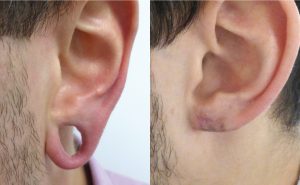
Earlobe repair aims at, restoring the aesthetic appearance of the earlobe, often affected by an injury or piercing. Whether the earlobe has been damaged or, elongated, this abnormal shape can be corrected through a minor procedure.
Earlobe repair is a quick and simple surgery that can be performed in our practice rooms. Usually, the scars from earlobe repair are very subtle and hard to see. Re-piercing your ears may be possible after healing, but heavy earrings may best be avoided to prolong your surgical outcome.
Ear Micro Surgery
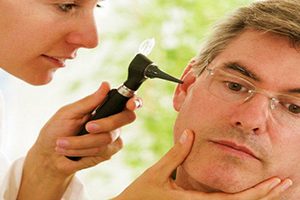
The structures inside the ear are very small, so the development of microsurgery has made it easier to perform more extensive surgery within this confined space. Microsurgery is used for eardrum repair, to locate and remove small ear tumors, and to repair the bones within the ear if they have become damaged, or have degenerated. Surgery is performed through the eardrum and then involves an eardrum reconstruction.
Treatment Of Facial Trauma
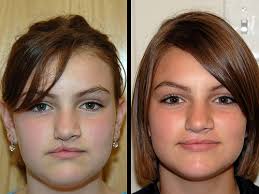
Facial trauma, also called maxillofacial trauma, is any physical trauma to the face. Facial trauma can involve soft tissue injuries such as burns, lacerations, and bruises, or fractures of the facial bones such as nasal fractures and fractures of the jaw, as well as trauma such as eye injuries.
Symptoms are specific to the type of injury; for example, fractures may involve pain, swelling, loss of function, or changes in the shape of facial structures.
Facial injuries have the potential to cause disfigurement and loss of function; for example, blindness or difficulty moving the jaw can result. Although it is seldom life-threatening, facial trauma can also be deadly, because it can cause severe bleeding or interference with the airway; thus a primary concern in treatment is ensuring that the airway is open and not threatened so that the patient can breathe.
Depending on the type of facial injury, treatment may include bandaging and suturing of open wounds, administration of ice, antibiotics and pain killers, moving bones back into place, and surgery. When fractures are suspected, radiography is used for diagnosis. Treatment may also be necessary for other injuries such as traumatic brain injury, which commonly accompany severe facial trauma.
In developed countries, the leading cause of facial trauma used to be motor vehicle accidents, but this mechanism has been replaced by interpersonal violence; however, auto accidents still predominate as the cause in developing countries and are still a major cause elsewhere.
Thus prevention efforts include awareness campaigns to educate the public about safety measures such as seat belts and motorcycle helmets and laws to prevent drunk and unsafe driving. Other causes of facial trauma include falls, industrial accidents, and sports injuries.
Treatment Of TMJ Disorders
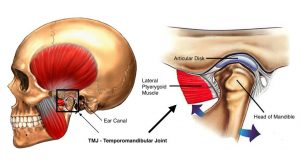
The temporomandibular joint (TMJ) acts like a sliding hinge, connecting your jawbone to your skull. You have one joint on each side of your jaw. TMJ disorders a type of temporomandibular disorder or TMD — can cause pain in your jaw joint and in the muscles that control jaw movement.
The exact cause of a person’s TMJ disorder is often difficult to determine. Your pain may be due to a combination of factors, such as genetics, arthritis or jaw injury. Some people who have jaw pain also tend to clench or grind their teeth (bruxism), although many people habitually clench or grind their teeth and never develop TMJ disorders.
In most cases, the pain and discomfort associated with TMJ disorders are temporary and can be relieved with self-managed care or nonsurgical treatments. Surgery is typically a last resort after conservative measures have failed, but some people with TMJ disorders may benefit from surgical treatments.
Symptoms
Signs and symptoms of TMJ disorders may include:
- Pain or tenderness of your jaw
- Pain in one or both of the temporomandibular joints
- Aching pain in and around your ear
- Difficulty chewing or pain while chewing
- Aching facial pain
- Locking of the joint, making it difficult to open or close your mouth
TMJ disorders can also cause a clicking sound or grating sensation when you open your mouth or chew. But if there’s no pain or limitation of movement associated with your jaw clicking, you probably don’t need treatment for a TMJ disorder.
Facial Cosmetic surgery
Facial Cosmetic surgery

Deciding to pursue facial cosmetic surgery is deeply personal. The plastic surgeons within MedStar Plastic & Reconstructive Surgery understand the unique concerns and emotions that come with facial surgery, and we’ll take the time to discuss your goals and our approach to achieving them.
In the hands of a highly-skilled surgeon with years of experience, you can enhance your appearance, refine your features and address functional issues.
Revision Ear Surgeries
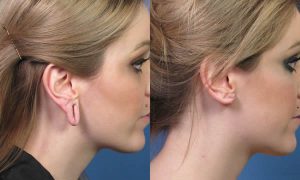
Revision Ear Surgery (Otoplasty Correction)Otoplasty (ear surgery) is a type of plastic surgery intended to improve the appearance and shape of the ear typically caused by congenital deformities in children and teens. In adults, otoplasty is also recommended for earlobe repair after ear “gauging” (stretching of the earlobe) or other injuries to the ear due to accidents.
The most commonly known type of ear surgery is ear “pinning” which is used to improve the appearance of protruding ears. Otoplasty is a complex surgery that requires a holistic understanding of the ear and an aesthetic appreciation of its appearance as it complements other facial features and also heads shape. If otoplasty is not performed correctly by a US Board-certified surgeon, patients may require revision surgery at a later time.
Why Is It Sometimes Necessary to “Revise” a Previous Surgeon’s Otoplasty or Ear Surgery?
The shape of your ears is a highly personal issue. As with any cosmetic procedure, it is quite common that patients may sometimes feel the need to revise their original results. Often, patients may find themselves unsatisfied with the results of the initial procedure or that their concerns were not fully addressed.
Specific Problems That Necessitate the Need for Otoplasty Revision Surgery.
When children undergo otoplasty (ear pinning) at a young age to correct prominently or “sticking out” ears, it may be necessary to reexamine the results of the procedure as they grow and get older.
Another concern is that when a less experienced surgeon performs ear surgery, patients may find that the ears have been “overcorrected” giving them an unnatural “pulled back” look. Or other common complaints include unnatural-looking creases where the ear meets the skull. Revision ear surgery can correct these issues.
The Skill and Artistry of Creating the “Perfect” Shaped Ear.
Quite often a plastic surgeon may have the technical skills to pin the ears back or to fix a congenital abnormality. However, not all plastic surgeons possess an “eye” for the aesthetic. This is the most common reason for ear surgery revision, the patient is unhappy with the appearance of their ears after the initial ear surgery, and seeks a more natural, aesthetically-pleasing result.
Understanding the beauty and complexities of the shape of the ear is an art form that requires a detailed surgical eye to ensure your ears are harmoniously balanced with your other facial features in a natural way.
How Is a Revision Otoplasty Surgery Procedure Performed? Is It Different From a Standard Otoplasty Procedure?
Ear surgery revision can correct several issues, including:
- To correct a prominent antithetical “fold”.
- Secondary ear reduction wherein too-large ears were not reduced enough
- “Telephone ear” where the top and bottom of the ears protrude outwards.
There are several procedures that a surgeon can use to correct ear surgery, including suture techniques, cartilage reconstruction, and also cartilage implants or “grafts” if necessary.
How Long Should I Wait Before Revision Otoplasty?
After any surgery, it is important to allow the body time to heal. Stitches, bruising, and swelling can make it difficult to realize the final results. That being said, once you are fully healed, if you are still unhappy with the results, please contact our office for a consultation.
Cochlear Implants Procedure

A cochlear implant is a small electronic device that electrically stimulates the cochlear nerve (nerve for hearing). The implant has external and internal parts. The external part sits behind the ear. It picks up sounds with a microphone.
It then processes the sound and transmits it to the internal part of the implant. The internal part is placed under the skin behind the ear during outpatient surgery. A thin wire and small electrodes lead to the cochlea, which is part of the inner ear. The wire sends signals to the cochlear nerve, which sends sound information to the brain to produce a hearing sensation.
Although the normal hearing is not restored, with appropriate therapy and practice, the improved hearing experience can mean an increased awareness of sounds in the environment, as well as better communication through easier lip reading and listening.
A cochlear implant may help someone with hearing loss restore or improve the ability to hear and understand speech. A cochlear implant is different than a hearing aid. A hearing aid makes sounds louder but may not significantly improve speech understanding.
When a person struggles to understand speech, even with appropriately fitted hearing aids, a cochlear implant should be considered. When the device is tuned appropriately and the recipient is committed to rehabilitation therapy, the cochlear implant can significantly increase hearing in adults. Cochlear implants in infants and toddlers may help them listen and learn to speak.
Pure Tone Audiometry
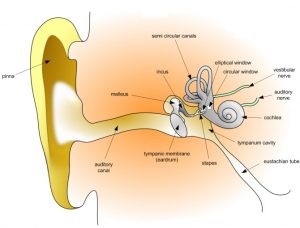
Pure tone audiometry is the key hearing test used to identify hearing threshold levels of an individual, enabling determination of the degree, type and configuration of a hearing loss and thus providing a basis for diagnosis and management.
Treatment Of Otosclerosis
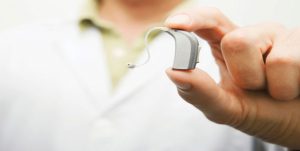
Treatment for otosclerosis
Treatment may not be needed until the degree of hearing loss is significant. Options may include:
- Medication – some studies have suggested that taking fluoride, calcium and vitamin D supplements may help to slow the progression of otosclerosis. However, this treatment needs further research before it can be confirmed
- Hearing aid – hearing aids can help most people with a hearing loss, even though they cannot restore normal hearing. Hearing aids aim to increase communication by providing more useful sound information
- Surgery – the affected stapes is surgically removed and replaced with a prosthesis or artificial stapes (stapedectomy). A successful operation may correct or improve the conductive hearing loss of otosclerosis.
Self-care after surgery for otosclerosis
After surgery, it is important (particularly in the early postoperative phase) to protect the structures within the ear from infection, pressure, and noise to reduce the risk of complications.
Be guided by your surgeon, but general suggestions include:
- Avoid blowing your nose
- Avoid cold temperatures
- Reduce your risk of upper respiratory tract infections by avoiding sick people
- Avoid changes in air pressure (air travel or scuba diving)
- Avoid loud noises
- See your doctor promptly if you experience ear pain, dizziness or fever, as these symptoms could indicate an infection.
Reconstructive Middle Ear surgery
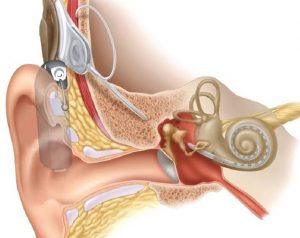
In a normally structured ear, sound waves are able to travel down the ear canal and vibrate the eardrum. When this tissue moves, it vibrates tiny bones, or ossicles, in the middle ear. The ossicles set off another set of vibrations in the fluid-filled middle ear.
These vibrations stimulate hairs in the inner ear, sending signals which the brain translates as sounds. However, when the ear canal is narrow or missing, these sounds cannot travel all the way down to the eardrum. Many microtia patients are entirely missing an eardrum.
To determine your child’s candidacy for eardrum reconstruction, your otologist will conduct a computed tomography (CT) scan. In addition to examining the condition of the ear canal and eardrum, he will also check to see if the ossicles are fused together. Patients who do not have properly separated ear bones are not good candidates for middle ear reconstruction.
THE RECONSTRUCTION PROCESS
Atresia repair is performed under general anesthesia. To protect your child’s health and safety, your otologist works with a pediatric anesthesiologist. When your child is comfortably sedated, the otologist will create a channel running through the temporal bone – the part of the skull located just below the ear.
When he gets close to the delicate middle ear, he will use a highly precise surgical laser to evaporate cells and create the last portion of the canal. Next, he will use a skin graft to create a new eardrum. The tissue is typically taken from the scalp, resulting in negligible scarring.
Auditory Processing Procedure
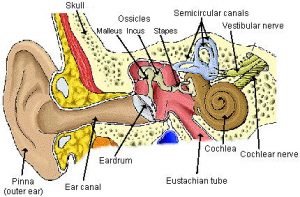
“Auditory processing” We are hearing this term be referenced more and more, and an increasing number of children are being identified as having an ” auditory processing disorder.” But what does it actually mean? How can you have normal hearing and have an auditory processing disorder?
First, let’s define “hearing.” The “peripheral hearing mechanism,” as it is referred to, includes the outer ear where sound waves are collected, the middle ear where the sound is converted to mechanical energy, and the inner ear containing the cochlea.
Traditional hearing tests (audiograms) and tympano grams assess the integrity of this system. If this system is intact and functioning well, then your hearing should test normal.
But what happens when the signal leaves the inner ear? Basically it travels along the auditory nerve, through the brainstem, and eventually reaches the brain. Auditory processing, simply defined, is what happens along this pathway and what the brain does with the auditory signal from the ears.
It has a number of different aspects, listed and enumerated differently by different authors. Below we list and define aspects of auditory processing that we have found to be relevant to the children with whom we work. Also listed are additional functions that are closely tied to auditory processing.
Endoscopic Micro Ear Surgery
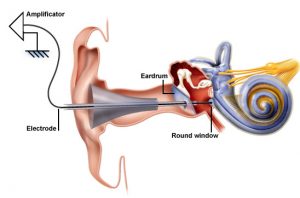
Endoscopic ear surgery allows a minimally invasive approach to the middle ear. The technique has a different learning curve than traditional techniques; training is useful to allow more consistent progress when getting started.
It can be useful to collaborate with other, more experienced surgeons who are more familiar with endoscopic ear surgery. A high-resolution computed tomography scan is useful before any middle ear procedure
whereby the endoscopic approach is to be used. It is vital to discuss whether more invasive surgery may need to be undertaken should the endoscopic approach was not successful in the first instance.
Undertaking endoscopic ear surgery through a narrow external auditory meatus can be challenging, but there are several techniques that will help considerably and allow for the wide view of the endoscope to be used to maximum advantage.
Gronmen Insertion Procedure
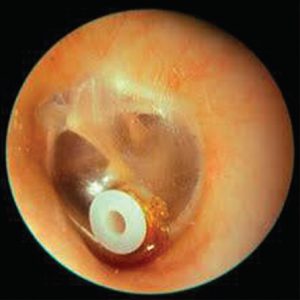
Grommets are tiny plastic tubes inserted into your child’s eardrum in a short operation
your child’s doctor may recommend grommets if your child has glue ear that won’t clear up, or has frequent ear infections
Grommets allow air into the middle ear (the space behind the eardrum) which reduces the risk of fluid building up there if an infection does occur, the pus comes out through the grommet
Otoneurology
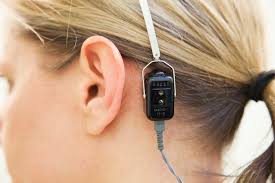
The field of otoneurology is a somewhat ill-defined subspecialty within neurology. The field of otoneurology overlaps other areas within neurology, especially neuro-ophthalmology and, in addition, otolaryngology and several health professions, such as audiology, physical therapy, and nursing.
Rather than being defined by a particular anatomic area or etiology, the field of otoneurology is defined primarily by the presenting complaints of dizziness and disequilibrium. Patients who present with balance and dizziness complaints often have hearing loss or tinnitus; thus, these complaints are included within the realm of otoneurology.
Sleep Study/Polysomnography

Polysomnography, also called a sleep study, is a test used to diagnose sleep disorders. Polysomnography records your brain waves, the oxygen level in your blood, heart rate and breathing, as well as eye and leg movements during the study.
Polysomnography usually is done at a sleep disorders unit within a hospital or at a sleep center. You’ll be asked to come to the sleep center in the evening for polysomnography so that the test can record your nighttime sleep patterns.
Polysomnography is occasionally done during the day to accommodate shift workers who habitually sleep during the day.
Hearing Impairment and Treatment
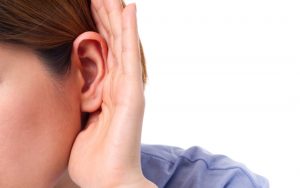
Deafness is usually the result of the inner ear or nerve damage. It may be caused by a congenital defect, injury, disease, certain medication, exposure to loud noise or age-related wear and tear.
The chief symptom is an inability to hear the sound.
For some, the hearing may be possible with surgery or a hearing device. Lip-reading skills, written or printed text and sign language may help with communication.
Endoscopic Micro Ear Surgery
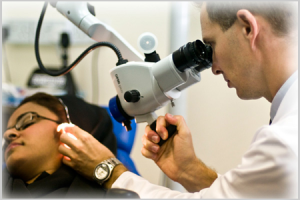
Endoscopic ear surgery
Specialty otolaryngology Endoscopic ear surgery, or “EES,” is the use of the rigid endoscope, in contrast to the operating room microscope, to visualize the middle and inner ear during otologic surgery. During endoscopic ear surgery, the surgeon holds the endoscope in one hand while working in the ear with the other.
To allow this kind of single-handed surgery, different surgical instruments have to be used. Endoscopic visualization has improved due to high-definition video imaging and wide-field endoscopy and is less invasive, EES is gaining importance as an adjunct to microscopic ear surgery
Vertigo Treatment

The structures inside the ear are very small, so the development of microsurgery has made it easier to perform more extensive surgery within this confined space.
Microsurgery is used for eardrum repair, to locate and remove small ear tumors, and to repair the bones within the ear if they have become damaged, or have degenerated. Surgery is performed through the eardrum and then involves an eardrum reconstruction.
Otoplasty (Ear Surgery)

The structures inside the ear are very small, so the development of microsurgery has made it easier to perform more extensive surgery within this confined space.
Microsurgery is used for eardrum repair, to locate and remove small ear tumors, and to repair the bones within the ear if they have become damaged, or have degenerated. Surgery is performed through the eardrum and then involves an eardrum reconstruction.
Ear Drum

Eardrum is a thin curtain-like tissue that separates the inner ear from the middle and outer ear. If this eardrum is somehow punctured, then that condition is referred to as an eardrum perforation. The eardrum can get perforated for a variety of reasons, but here are the major causes for the same.
Causes Of Ear Drum Perforations
- Infection– An ear infection can alleviate an eardrum perforation. Usually, the infected area may undergo inflammation to such a degree that it may puncture the eardrum. Normally, in case of eardrum perforations due to infections, the pus from the infection drops out of the ear.
- Foreign object– Inserting a foreign object inside the ear in a bid to scratch or clear the area can damage the eardrum. Avoid using Q-tips and other foreign items to scratch the ear.
- Barotrauma– This is a condition when the air pressure on the outer ear is not the same as the pressure inside the inner ear. Usually, barotrauma is caused when a plane changes altitude or in case of scuba divers when they make the dive deep down.
- Injury– Injury resulting from head trauma or a slap across the ear can sometimes cause the eardrum to rupture as well.
Symptoms of Ear Drum Perforation
Everyone does not experience the typical symptoms that are associated with a perforated eardrum. Most people do not notice it at once but may visit the doctor after several days of discomfort. People who have a perforated eardrum may also notice air coming out of their ears when they blow their nose. This happens as the forceful blow of air causes the air to rise inside the ear cavity and come out through the opening in the eardrum. Apart from these symptoms, pain in the ear, pus discharge, hearing loss and dizziness may also be caused due to the condition.
Treatment for Ear Drum Perforation
Eardrum perforation does not require a specific kind of treatment to heal. This is because the condition gets repaired by itself within a couple of months. Doctors may, at the most, prescribe antibiotics to ensure that the ear does not get infected prior to complete healing. If the condition is extremely painful, doctors may also prescribe certain over-the-counter pain medications to you. In some rare cases, surgery may be needed in order to completely mend the perforated eardrum.
Ear Wax
The body has its own protective mechanisms, and one of these is the ear wax. The skin in the ear produces an oily, waxy substance known as cerumen. This is produced to help protect the ear from the dust and the microorganisms that it is constantly subjected to. What happens is this earwax is naturally removed from the ear as it gets washed away through the ear canal that opens to the outside. However, in some cases, where there is excessive production of wax, it can harden and cause a blockage. Read on to know more about how this ear wax builds up, how it may cause blockage, and how to get rid of it.
Buildup: As noted, the ear wax is a natural protective mechanism to keep dust and bacteria from entering the ear canal which is a very critical organ. The middle ear is responsible for maintaining overall body balance. However, in some people, more wax is produced than what gets removed. Also, due to the recurrent use of earphones and earbuds, the wax can get pushed deeper. The earphones also could block the wax from getting out of the ear canal.
Excessive ear wax can lead to the following:
- Infection
- Pain in the ear
- Hearing loss, which can progress even to complete deafness
- A feeling of ringing in the ears (known as tinnitus)
- Drainage from the ear
- Foul smell from the ear
- Dizziness
It is important to know that trying to remove ear wax at home should be avoided, as they can push the wax internally and cause more severe problems. These above symptoms could be indicative of various other problems in the ear and so should be immediately attended to by a medical doctor. Those who use hearing aids may also face the problem of excessive wax buildup.
Removal: As mentioned above, removal should not be done at home. This is true especially for young children and the elderly.
- Wax softening: There are specific drops which can be used to soften ear wax. Some other products at home which can be used include baby oil, glycerine, mineral oil, or hydrogen peroxide.
- Over-the-counter: Ear irrigation kits are available with clear instructions and can be used safely.
As the next step, clinical removal may be required. Those who are prone to excessive wax buildup may go for an annual or biannual wax removal. This could include irrigation and use of suction or curette to remove the wax. Ear wax, though not very pleasant, has a role to play in the ear’s health and small amounts of it is beneficial.
Acoustic Neuroma
Acoustic neuroma refers to a tumour that grows on the main vestibular nerve connecting the inner ear to the brain. This nerve has a direct influence on both hearing and balance. This is a very slow growing tumour that is non-cancerous in nature. It is also known as a vestibular schwannoma. If left untreated, the pressure an acoustic neuroma puts on the nerve can cause a loss of hearing and unsteadiness.
An acoustic neuroma grows very slowly and hence the symptoms can often be very subtle. In many cases, this condition goes undetected for a very long time. Symptoms of an acoustic neuroma usually are a result of tumours effect on balance and hearing. A tumour may also put pressure on the nerves controlling the facial muscles and adjacent blood vessels. Thus, symptoms are usually noticeable only after a tumour has grown quite big. The most common symptoms associated with this condition are:
- Loss of hearing – This is usually gradual but in some cases, the patient may suddenly experience a loss of hearing. Hearing loss caused by acoustic neuromas is usually more pronounced in one ear or is affected only in one ear.
- Tinnitus – This can be described as a ringing sensation in the ear. This is usually experienced only in the affected ear.
- Loss of Balance – When the neuroma puts pressure on the nerves of the inner ear, a person may find himself unsteady and have a higher risk of bumping into things or being clumsy.
- Dizziness – The inner ear not only helps with hearing but also helps maintain balance. Thus, if extra pressure is put on these nerves, the patient might find himself experiencing frequent bouts of dizziness.
- Facial numbness – An acoustic neuroma also puts pressure on the nerves connected to facial tissue. Thus, it may cause slight facial numbness or a tingling sensation. There could also be a loss of movement in the facial tissues.
Acoustic neuromas are easily treatable. Treatment for this condition usually takes the form of surgery to remove a tumour or radiation therapy. This too is suggested only if a tumour grows large enough to have serious symptoms. For small tumours, doctors usually simply observe the growth rate of a tumour and prescribe medications to relieve the symptoms if any. However, this condition should never be ignored as in a few cases, the tumour can grow very large and affect the brain stream. It can even be life-threatening in such cases.
Noise Induced Hearing Loss
While most noise is just in the background for us, loud noises, either in small spurts or prolonged exposure, can cause hearing loss. This has been happening more frequently as the levels of noise in an industrialized society go further up.
Noise induced hearing loss explained
Loud noises may damage the sensitive structure of your ear, which process the sound waves into information. They eventually become nonfunctional, resulting in a loss of hearing in that range. If exposure to loud noises continues, then this might extend to the entire range of hearing and may cause total hearing loss.
What may cause noise induced hearing loss?
Some of the scenarios which may cause noise induced hearing loss are as follows:
- Listening to music on high volume: If you constantly listen to music or watch movies at your home on very loud levels, then it may result in noise induced hearing loss. In fact, listening to music or watching movies with headphones in your ears is one of the leading causes for hearing loss. Headphones have deceptively loud levels and may result in damaged hearing overtime.
- Noise of household tools: Household tools such as drills, mixers, grinders, mowers, and saws can expose you to loud levels of noise. Even a quick exposure for a few seconds could temporarily damage your hearing.
- Occupational problems: Occupations such as construction, factory work and military that require the use of power tools on a constant basis can also cause hearing loss. The sound from the resulting friction might damage your hearing very quickly. Explosions and impacts are also causes of hearing loss in the military and law enforcement departments.
Treatment: It is difficult to treat hearing loss as in most cases; it may be permanent, except sudden shocks, when your hearing might come back to normal. The only treatments for hearing loss are hearing aids or cochlear implants which can restore hearing partially.
Prevention: Prevention is the best method to avoid hearing loss and in most cases, you should wear ear protection such as mufflers or sound level reduction devices to protect your hearing. Also, practice listening to music, watching TV or movies at lower levels, especially if you are on the headphones.
